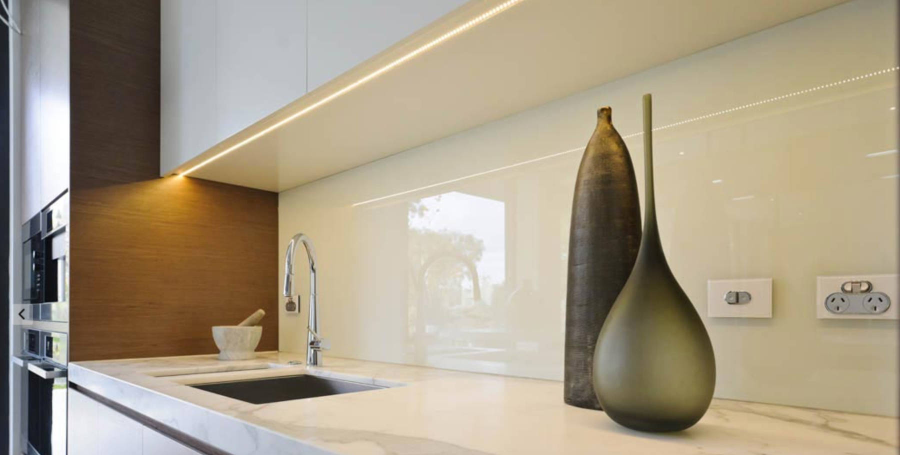In modern kitchens and bathrooms, glass splashbacks have become famous for adding functionality and aesthetics. These sleek, reflective panels protect walls from splashes and stains and contribute significantly to the overall design and ambience of the space. However, when installing a glass splashback, homeowners often need help choosing between a do-it-yourself (DIY) approach or hiring a professional for installation. Each method has advantages and considerations, making decision-making crucial for a successful outcome. Let’s delve into the nuances of both approaches to help you determine which one suits your glass kitchen splashback project best.
DIY Installation:
Advantages:
- Cost Savings: One of the most significant advantages of a DIY installation is cost-effectiveness. By undertaking the project yourself, you can save on labour expenses for hiring a professional installer.
- Customisation: DIY projects often allow for greater customisation. You can choose the glass type, size, colour, and design that perfectly aligns with your vision for the space.
- Personal Satisfaction: Completing a DIY project can be immensely satisfying. Knowing you installed the splashback yourself provides a sense of accomplishment and a personal connection to the space.
- Flexibility in Timing: DIY projects can be scheduled according to your availability, allowing you to work on the installation at your own pace without being constrained by a professional’s schedule.
Considerations:
- Skill and Expertise: Installing a glass splashback requires precision and specific skills. Cutting glass accurately, handling adhesives, and ensuring a seamless fit are crucial aspects that demand experience and expertise.
- Tools and Equipment: Proper tools and equipment are essential for a successful installation. If you need access to specialised tools for cutting and handling glass, acquiring or renting them should be factored into the overall project expenses.
- Risk of Errors: Inaccurate measurements or improper installation techniques can lead to costly mistakes. Repairing or replacing a botched DIY installation is more expensive than hiring a professional.
- Time Investment: DIY projects often take longer to complete, especially if you’re learning as you go. Consider whether you have the time and patience to dedicate to this project.
Professional Installation:
Advantages:
- Expertise and Experience: Professional installers have the necessary skills, experience, and knowledge to handle glass installations proficiently. They can ensure precise measurements and flawless execution.
- Efficiency and Precision: Professionals are equipped with the right tools and techniques to complete the installation efficiently and accurately, reducing the risk of errors or damage to the glass.
- Warranty and Guarantee: Reputable installers often provide warranties on the artistry and materials used, offering peace of mind in case of any issues post-installation.
- Time-Saving: Hiring professionals can expedite the installation process, as they are familiar with the best practices and can complete the job swiftly without compromising quality.
Considerations:
- Cost: Due to labour charges, professional installation typically involves higher upfront costs than a DIY approach. However, this cost might be justified by the expertise and quality assurance provided.
- Limited Customization: While professionals ensure a high-quality installation, customisation options might be limited compared to a DIY project, where you have more control over the design and materials used.
- Scheduling Constraints: Coordinating with professional installers might require aligning your schedule with theirs, potentially causing delays if their availability doesn’t match your timeline.
- Reliance on Others: Relying on professionals means entrusting your project to external individuals or companies, requiring careful selection and vetting to ensure competence and reliability.
Conclusion:
Deciding between a DIY or professional installation for your glass splashback project involves weighing various factors such as cost, expertise, time, and customisation options. If you possess the necessary skills, tools, and confidence in your abilities, opting for a DIY approach can be a fulfilling endeavour. However, if precision, efficiency, and a hassle-free experience are paramount, engaging professionals might be the better choice.
Ultimately, the decision hinges on your comfort level, available resources, and the complexity of the installation. Regardless of the path chosen, ensuring careful planning, adequate research, and attention to detail will contribute significantly to the success of your glass splashback project, enhancing both the functionality and visual appeal of your space.
- Measurements and Cutting: Accurate measurements are crucial—measure where the splashback will go and transfer these measurements to the glass. Use safety equipment such as gloves and goggles, then cut the glass according to the measured dimensions. Consider hiring a professional glass cutter if you need more clarification about cutting the glass yourself.
- Adhesive Application: Apply an appropriate adhesive recommended for glass splashbacks onto the back of the glass. Follow the manufacturer’s instructions regarding the application.
